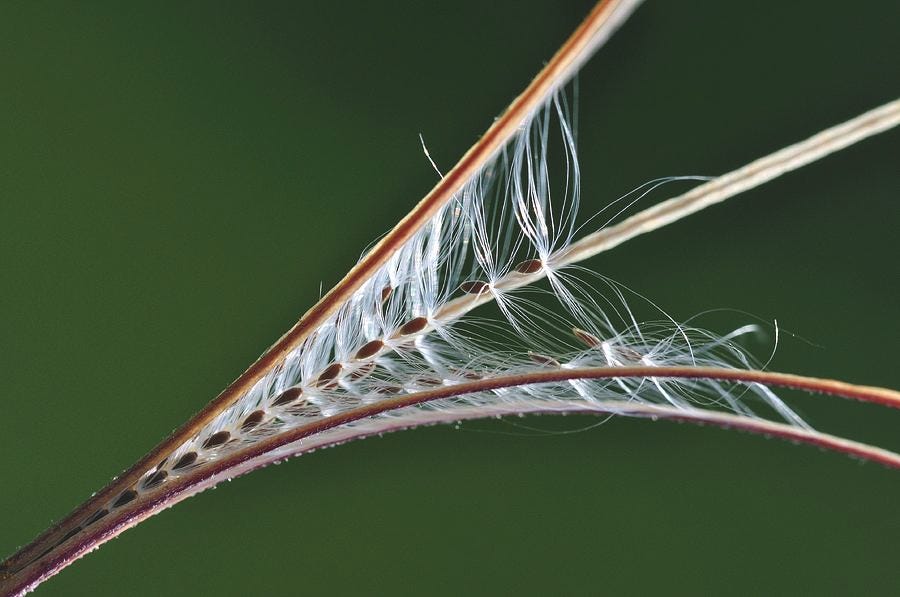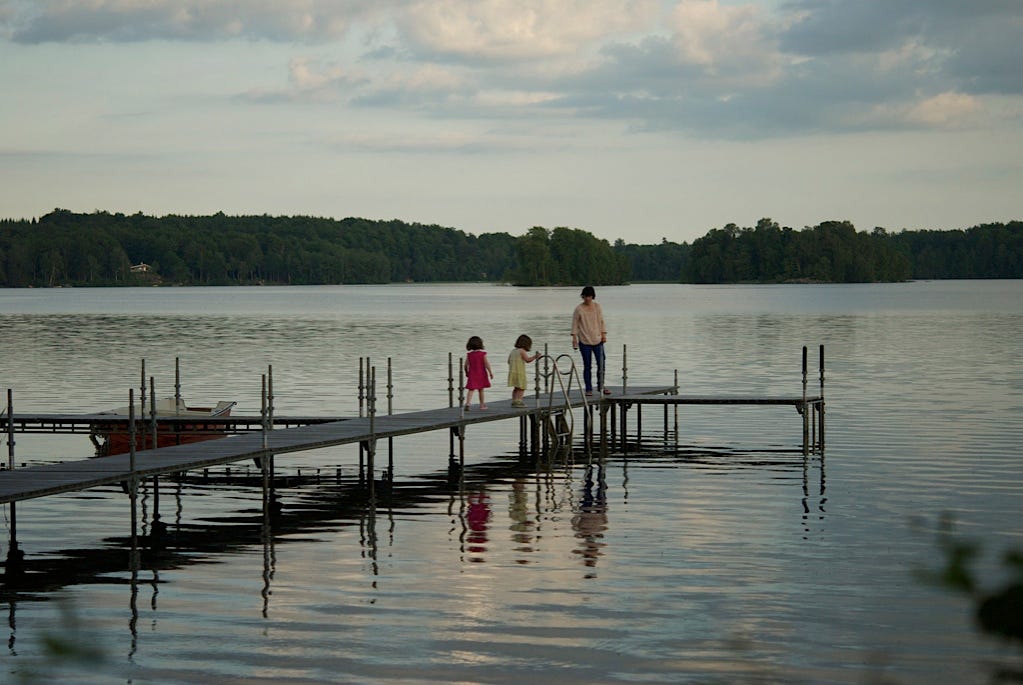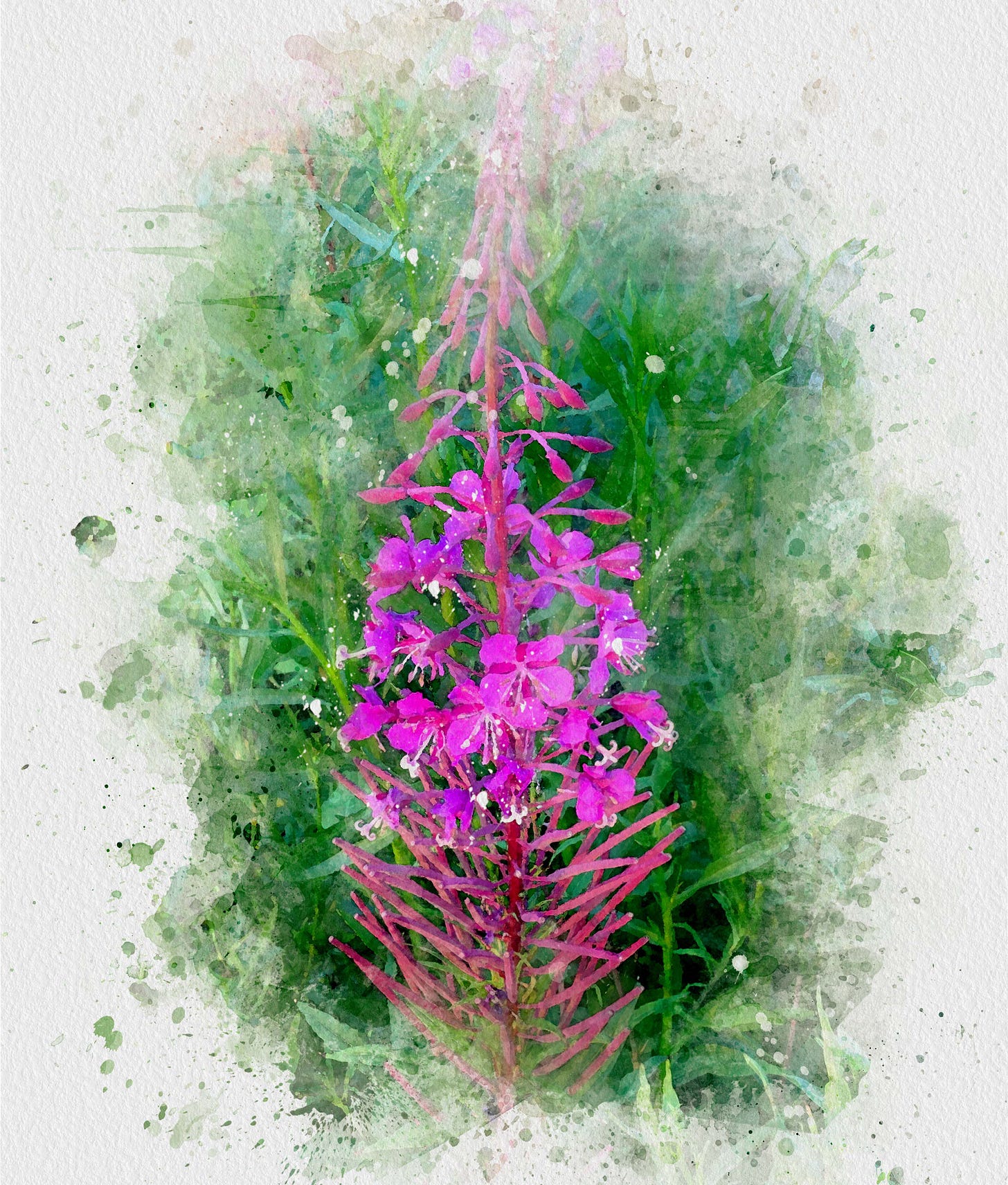
Rosebay Willowherb - a perennial flame, emerging from the soil late spring, early summer, shoots pushing upwards, the slim arrows of your deep green leaves sharp and true like willow tree which lends its name. Dark leaves, luminous, pale veins running the length from base to tip, growing from stems of palest green, soon tinged with reds and darkening to rich burgundies as they thrust ever upwards.
Buds appear, quickly swelling, pushing outward, away from the stem. Bursting open they reveal glorious pinks, each flower framed at the four points of the compass by bladed sepals, drooping stamens tipped with blue pollen. Bees visit, and, pollen harvested, the stigma unfurls and curls, forming a white cross, glowing against the vibrant cerise. As petals shrivel and the inflorescence drops, sepals zip shut, seed pods standing proud, sharply angled to the stem until - poof! - bursting open, they catapult a joyful cloud of feather tipped seeds into the autumn light.
The leaves change, colour transmutes from deep green to saffron yellow, then orange, arrows become flames, reflecting the light. Shrouds settle over each stem, leaves shrivel, dry, brown, hanging limp, that glorious spike of colour now dulled. Once glowing, the spike, now edged with seed pods, curled open and wisped with gossamer, stands softened against the wintery sun.1
Dear readers,
How are you? I can’t believe I’ve been writing for four months! Reflecting on the experience, I have relished this act of writing, enjoy crafting sentences more than I expected. I’ve been thinking alot, as always, about our relationships with flowers, and today’s letter has somehow become my love letter to Rosebay, the best of all the Willowherbs. Doesn’t everyone have a favourite flower? Greedy for flowers, I have several, but forced to choose, Rosebay Willowherb tops my list. Above, a brief paean to this beautiful flower, below: Our Story.
My childhood memories are intricately laced around the tall pink spires of Rosebay Willowherb. My late maternal grandmother, Mormor, Ketty Raaby, was a towering figure in my youth, metaphorically looming over my family, enveloping us in her loving control. Her controlling love? Years may have passed, but even at a distance I find it hard to describe our relationship. Mormor had a summerhouse in Southern Sweden, and her garden was, in her words, a nature plot. Occasionally the grass was mowed and there was always a potato patch but other than that she let the wildflowers and grasses take over.
Every summer when we arrived Mormor would proudly show me her patch of ‘Gederams’ - Gederams (Rosebay Willowherb / Epilobium angustifolium) - which had reappeared, as it did every year. Tall, colourful spikes standing out against the pine trees. The ground in that part of Sweden is not good, full of stones (because of all the trolls throwing rocks around) it’s not great for growing things. Rosebay Willowherb grows in two ways, from the seeds released from the fruit capsules which spring open and catapult the seeds with their little silken parachutes onto the autumn breeze. And from rhizomes which spread underground. I suspect that this patch had strong roots and grew from rhizomes, as it was always in the same place.
Mormor was my cheerleader, and my rock, the person who told me I could be anything I wanted to be, who was endlessly patient, generous and forgiving, shored up the foundations of my life, who loved me just for me, until - she didn’t. As family dynamics always are, it’s very complicated, too nuanced to accurately describe with the character limit in here. I chose my own life (in England), rather than the one she tried so hard to give me (in Denmark), and by the time I turned 24, her mask slipped, disappointment leaking out. The wound cause by the fallout was deep - it never truly mended. My Scandinavian roots were torn up.
The house is still in my family although I haven't visited for a long time. I hope the Rosebay Willowherb is still there. When I think of Mormor I see her in my minds eye walking the well trodden path around her nature plot, wrists resting on her hips like a teapot, fingers clutching wisps, weeds and leaves as she does the rounds checking on all her plants and flowers.
Rosebay Willowherb is also known as Fireweed or Bombweed - a plant which often grows on burnt ground, it was relativly rare in the UK until after WW2 when it grew voraciously on bomb sites. Resilient, Mormor lived through the war and she learned, despite hardship, trauma and loss, to stand tall and shine: this is the lesson I have learned, from both her and the flower. Half a lifetime later, the same age she was when I was born, I find myself regenerating, rediscovering my love of wildflowers and reconnecting with nature she was so instrumental in teaching me about. Perhaps a fragment of those Scandinavian roots remained. For many years, Mormor taught foraging skills - she knew her Boletus2 and Chanterelles. Teaching classes, looking closely at wildflowers, I think about her all the time. In life we have to learn to sort the seeds of love and hurt. Her picture is on my desk and everyday when I look at it, I remember her with great love. How I miss her.
I’ve been working on a large scale Rosebay Willowherb sculpture for a couple of years now, one day I’ll complete it. Here’s a glimpse at process and prototypes:
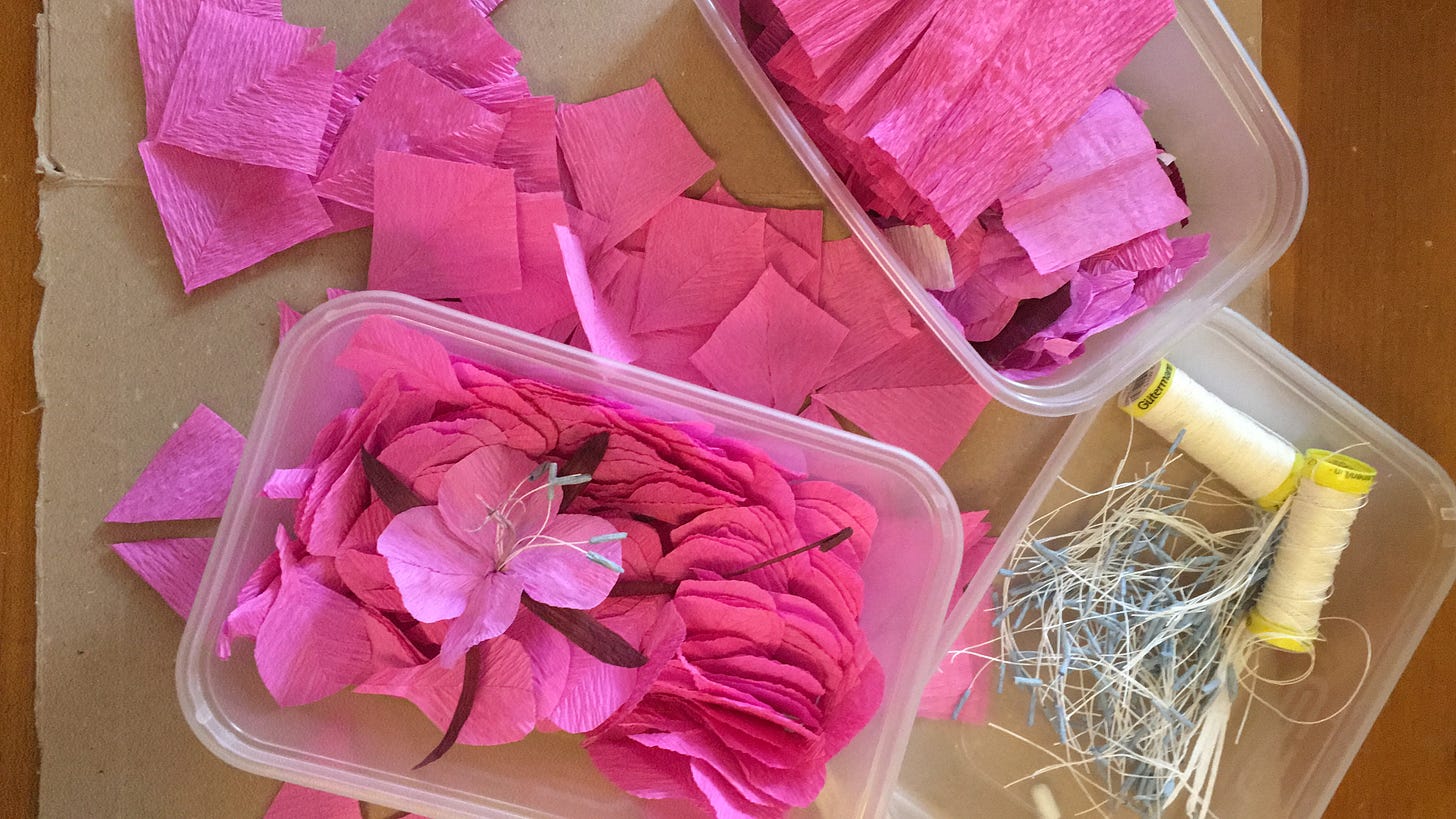
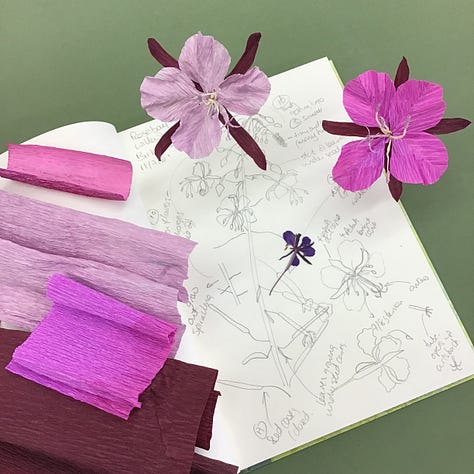
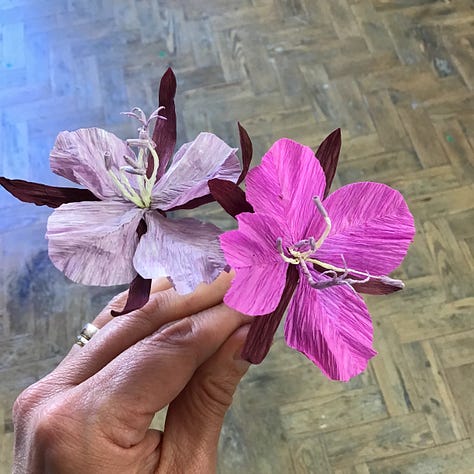

It is often the case I don’t know where this newsletter is going to take me. I didn’t envisage this one becoming so personal. But that is the way with flowers, why we have a language of flowers - and why everyone has a favourite. What is yours? Tell me your stories - leave a comment!
Thanks for reading, and until next time, with love, Ling
PS Strangely, down at the bottom of the list is Greater Willowherb. I’ve given a lot of thought to why that might be, and the best I can come up with is that it’s just so scruffy, it gives the stately, elegant spires of Rosebay Willowherb a bad name. Although they share many characteristics - colour, fluffy exploding seedpods, leaf shape - Greater Willowherb just doesn't cut it for me. Greater has nothing on the OG, Rosebay
Ling Warlow September 2023
Do NOT pick and eat mushrooms unless you know exactly what they are. Some Boletus are very good to eat, others are inedible, still others are poisonous.




